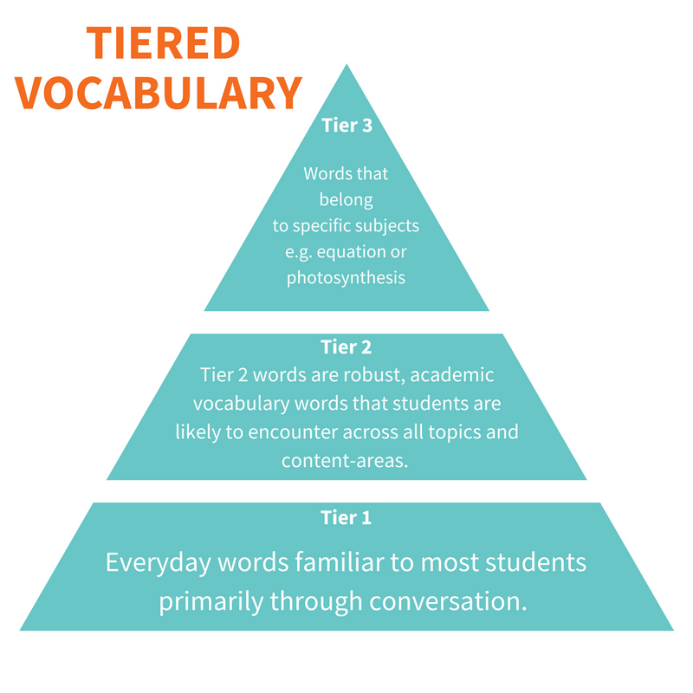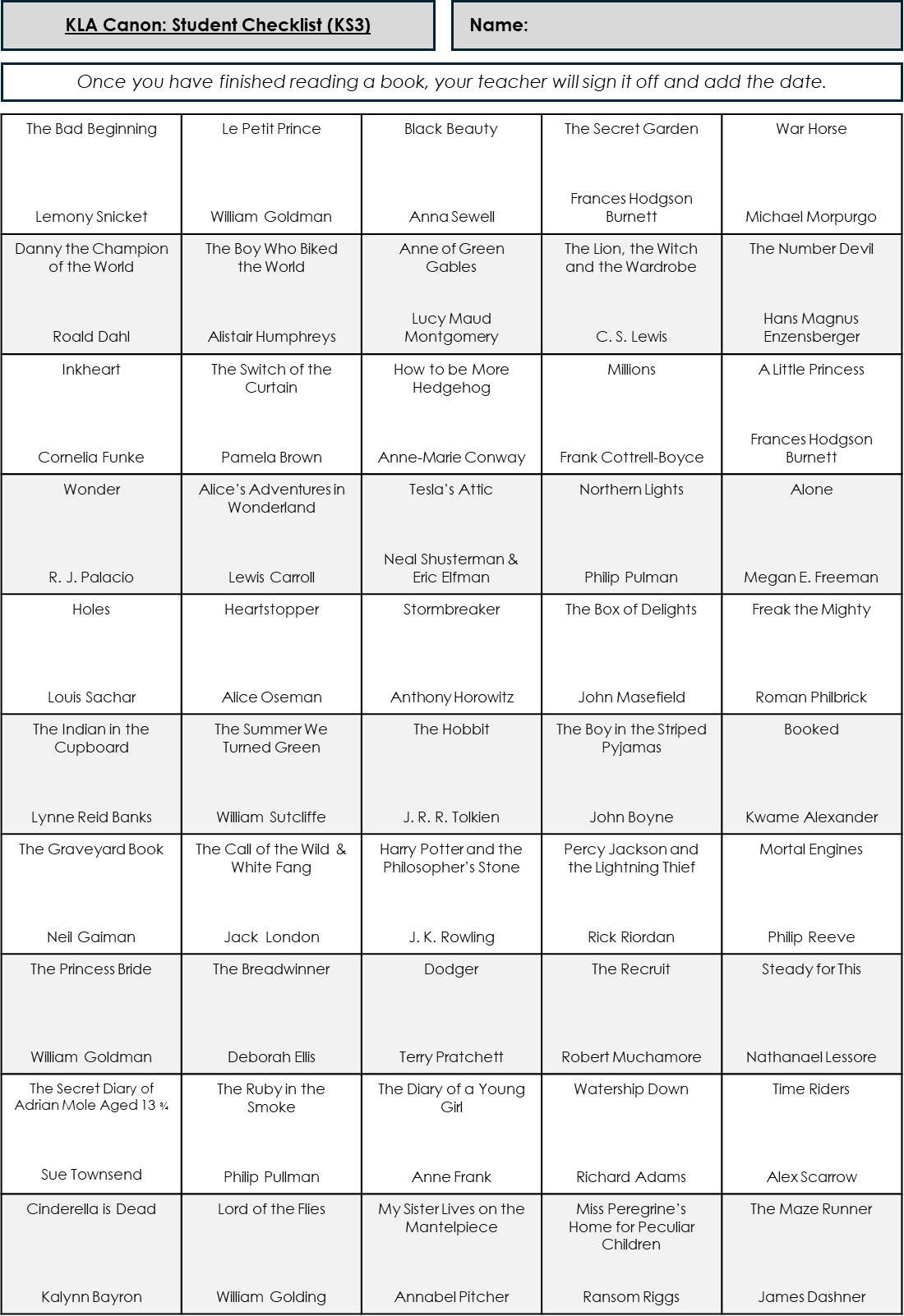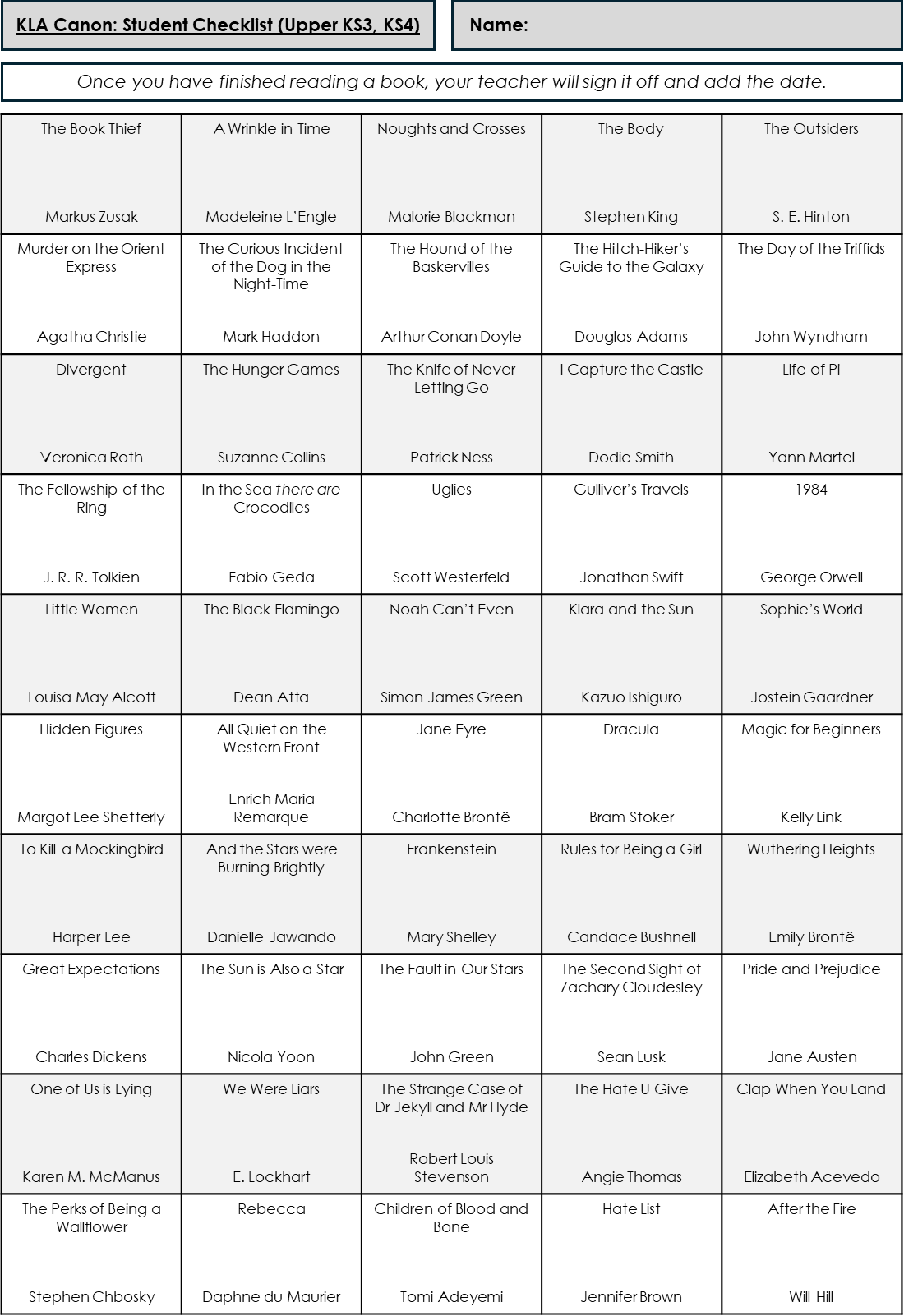The KLA Approach to Reading
At KLA, we believe that reading is a right for all students. It is the gateway to all other learning.
Students’ reading ages are assessed three times a year using the NGRT reading test. If a student’s reading age is behind their chronological age, we support them to catch up. This might be in the classroom setting, or through more intensive one-to-one work.
Staff choose and adapt texts that are suitable to the reading ages of students to ensure readability.
We know that vocabulary acquisition and reading are inextricably linked, and that is why teachers will routinely pre-teach the key vocabulary that might cause a barrier to comprehension. This means that students will be able to concentrate on the meaning of the text in-front of them, rather than focusing on challenging words – reducing the cognitive load. Colleagues use the Frayer’s Model for this purpose. This is a quadrant that students fill in to better understand the word, and its relationship to others. Below is an example from a Science lesson.
The Frayer’s Model
Photosynthesis
|
Definition
The process in which green plants use sunlight to synthesise nutrients from carbon-dioxide and water.
|
Characteristics
Photo = light Synthesis = combining
|
|
Example
Photosynthesis is the process which converts light energy from the sun, into oxygen and sugars.
|
Non-Examples
Darkness Synthesising oxygen and carbon-dioxide Working independently |
The link between reading and vocabulary is further strengthened by foregrounding the academic language in the texts that we read. By understanding this language, and then using it in their own responses, students can become more articulate and precise with their thinking. The model we use for this is Beck’s Tiers of Vocabulary. Tier One words are everyday words. Tier Two words are academic and more formal. Tier Three words are specialised words and subject terms. By reading, and studying this Tier One and Two vocabulary, students are more adept at using it in their own writing.
Beck's Tiers of Vocabulary

Teachers explicitly teach different reading strategies such as skimming, scanning and close academic reading. We emphasise reading aloud and model what fluent reading sounds like. This involves pace, pausing, intonation, and emphasis. By hearing high quality reading, students better comprehend the text, and can imitate these skills themselves.
Fluent reading aloud not only aids comprehension, but also enjoyment. Hearing text read well, makes it come alive, and provides a direct link to our story telling past. We want students to relish reading for pleasure. In English lessons, students enjoy reading and discussing a whole text together as a shared experience. Students have access to a well-stocked library to encourage independent reading, and teachers readily recommend books from our “KLA Canon” and beyond. Groups of students partake in the Carnegie shadowing award, and celebrate World Book Day in a range of activities.
Beyond this, staff at KLA, regardless of discipline, teach not only how to read, but also its value in our academic lives and beyond.
“To learn to read is to light a fire; every syllable that is spelled out is a spark”.
Victor Hugo


